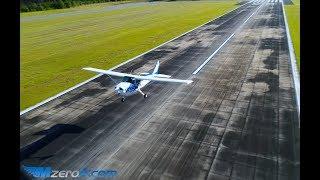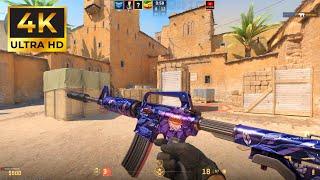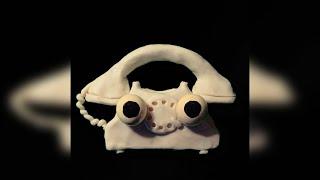
Short Field Takeoff and Landing - MzeroA Flight Training
Комментарии:

Well explained. One thing though. Some trainers are in MPH and some in KTS. Important to know those numbers when landing.
Ответить
Great video thanks Jason
Ответить
Excellent training! Good job!
Ответить
Hi Jasson...why are you wearing two watches?
Ответить
Thanks ... why flaps full on landing ... in the end and breaks ...
Ответить
And of course he makes it look as easy as breathing..
Ответить
I have my flight review coming up in two weeks and am going through some of these old videos just to keep the knowledge fresh.
Ответить
very nice video! I learned a lot in a short video believe it or not.
Ответить
I have perfect landings because of this guy. "Airspeed is KING" indeed! 👏🏽
Ответить
I fly at cyxx and there is basically never a normal circuit lol
Ответить
What are you thoughts on simulating a 50 foot obstacle? My first instructor told me to clear it then dive it down. My more recent instructor said that's old school and not taught anymore.
Ответить
I don't understand what you mean when you say aim beyond your touchdown point but still touchdown at the numbers.. please explain
Ответить
Very helpful to student pilots!
Ответить
Never flow Right seat always wondered how the center line would line up that's
Ответить
Just stopped in this video to prepare for a short field takeoff and landing lesson tomorrow… these are really helpful videos!!!
Ответить
Radio lesson, traffic lesson, and short takeoff and landing, great video MzerA
Ответить
I love your videos, they really make me a better pilot. One question about your speed.
You were coming in at 70, shouldn't you be at 61 for a short field in a 172 at that point?

I know its an older video Jason but still very useful and if posted today. Thanks for what your doing.
Ответить
I want to learn flying from you... what will i have to do??
Ответить
Sometimes it's not only about our airspeed on final, but what we do to hold said speed.
You can come in steep with a nose down attitude, and low power, or you can use a slightly nose up attitude, keeping sink rate with power and speed with pitch (region of reverse command). That way, when you reach your desired touchdown point, yoi chop power and increase nose up attitude, the plane will lose speed quickly and floating on ground effect will be minimal.
Touching down at a higher nose up attitude will aid in aerodynamic braking and help protect the nose wheel assembly in rough fields.
I currently fly an Embraer 110 P-1, and that is our technique in short fields.

Jeez that plane flies smoothly
Ответить
How are you getting those external shots that aren't from cameras mounted to the airplane? Did you have someone operating a drone at the field or did you recreate your airplane in a simulator?
Ответить
Jason I wish I had you as my FI. The guy I had was a cranky grumpy old geezer who thought we were flying in Bleriot's. But I learned a lot from him which I still remember to this day so he wasnt a bad guy after all.
Ответить
Always a great video 📹 👍 👌 👏
Ответить
Epic video muh dude
Ответить
Excellent, sir! Hugely enjoyable videos.
Ответить
I appreciate what you have shared. good info
Ответить
My instructor recommended you. You're incredible. Keep the videos coming!
Ответить
Always love your videos.
Ответить
Hate the Bomber patterns! Why are they taught to all students?
Ответить
Good advice. But wouldn’t it be better to keep airspeed up on final, rather than at minimum, and execute a cross-control landing at a higher threshold altitude, which will put you on the ground sooner, and then immediately take off all flaps. And if there is another plane on final behind you, after touching down, roll out on the side of the runway, so that the following plane can, if necessary, take the center/left runway passing you. Always maintain as much distance as possible between your plane and others either approaching or already in the pattern - just as the plane following extended his downwind for that reason. Great advice on always looking several times for other traffic which may not be making calls. Never assume that other pilots will fly correctly.
Ответить
Coming up on my checkride. Thanks man!
Ответить
Awesome. I'm starting short field takeoffs/ landings today. Great seeing what it should look like.
Ответить
Hey Jason quick question. Why do you extend flaps even though you're not in the white arc?
Ответить
High marks !!! Great handling of the situation !!
Ответить
Great instruction! I like how you keep it practical and we’re not afraid to not have a perfect scenario.
Ответить
I’m about to start this part of my privet pilot training soon. ALL of your videos are extremely helpful, thank you for sharing your knowledge. Cheers 🤜🏼🤛🏼
Ответить
Let’s all read our bibles in these crazy days!
Ответить
Really want to keep watching your video, but I cant keep listening to you yell. Good content, but damn son. Also...was that a drone flying next to the runway?
Ответить
I just turned 56 on 3/3 and I wanted to know if I am too old to start flying?
Ответить
Nice watch. 😀
Ответить
I didn’t learn anything new but you fortify what I already know. Thank you.
Ответить
This is awesome, working on my soft field landing
Ответить
The microphone element is too close to your mouth.
Ответить
Setting mixture for best power and keeping elevator neutral on roll out to reduce drag helps performance.
Ответить
Aerodynamic braking..... first time I've heard that one.... and yes, I'm a beginner lol
Ответить
Love the communication lesson. I learned I should never assume someone heard me radio in.
Ответить
Wow nice video!
Ответить
seems like you should reposition your microphone
Ответить
Walker Kenneth Lewis Betty Lewis Robert
Ответить

























